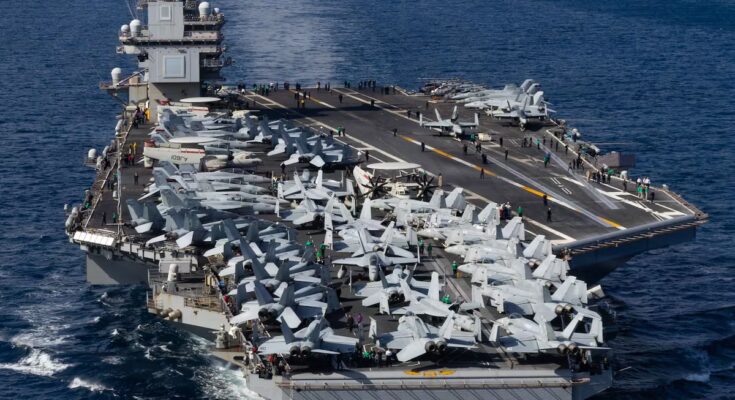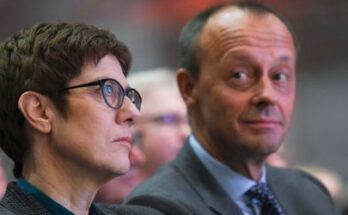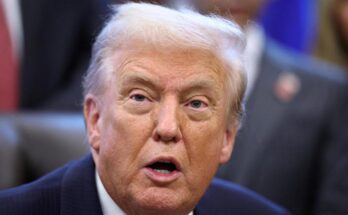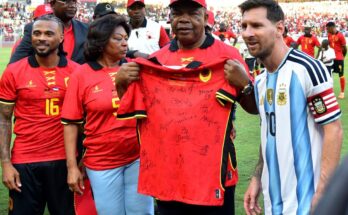Pressure is mounting in the Caribbean, as signs grow that the United States could at any time intensify its campaign of military strikes against suspected drug traffickers in those waters and the Eastern Pacific. This Friday, the Southern Command released the first official photos of the world’s largest aircraft carrier, the Gerard Fordalready operating in its area of responsibility, the day after Defense Secretary Pete Hegseth announced on social networks the start of a new major operation against “narco-terrorists” in the Western Hemisphere.
For now, the details of this operation are very limited. In his message on social networksSouthern Spear), but did not provide further information on the type of missions it will carry out. Nor whether the “phase two” that American President Donald Trump spoke about in his campaign against drug trafficking will take place within it. It would include, he stressed, land targets as part of pressure measures on the Chavista regime in Venezuela, whose president, Nicolás Maduro, he accuses of being part of drug cartels.
The US Department of Defense had already announced an operation of the same name in January, which involved the use of robots and drones in the fight against drug trafficking on the American continent.
📍Western Atlantic Ocean
In the #SUDCOM region, Carrier Strike Group Twelve provides a presence with a purpose: to deter illicit networks, disrupt transnational threats, safeguard the Caribbean and defend the homeland. @CVN78_GRFord pic.twitter.com/zG4IVQS2ln— US Southern Command (@Southcom) November 14, 2025
The Pentagon did not want to provide further details and limited itself to referring to Hegseth’s message released online. In it, the Secretary of Defense declared: “President Trump has ordered us to act, and the War Department (Hegseth’s preferred name for the Department of Defense) is complying. Today I am announcing Operation Southern Lance.”
“Led by Joint Task Force Southern Lance and Southern Command, this mission defends our homeland, expels narcoterrorists from our hemisphere, and protects our homeland from the drugs that are killing our people,” the head of the U.S. military said. “The Western Hemisphere is America’s neighborhood and we will protect it.”
Hegseth’s cryptic statement sparked a frenzy of speculation about the possibility that the United States is preparing some kind of attack against targets inside Venezuela after the arrival of Gerard Ford. The aircraft carrier, the most modern in the world and a major flagship of the US fleet, was recalled to the Caribbean on October 24, leaving the Mediterranean and the Central Command area of responsibility – where it was responsible for the Middle East – without an aircraft carrier in its waters despite the delicate geopolitical situation in the area, where the ceasefire in Gaza remains in fragile condition.
Him Gerard Fordwhich can carry up to 90 fighter aircraft and has a crew of 5,000 soldiers, is accompanied by its escort group, which includes three destroyers armed with long-range missiles. These include Tomahawk projectiles, which Ukraine unsuccessfully requested from Trump, believing would allow them to hit targets deep in Russian territory.
Military options
Hegseth’s announcement came a day after he and Chief of Staff Gen. Dan Caine conducted Trump’s weekly intelligence briefing on Wednesday. In that session they explained the military options the United States has for acting in the Caribbean and Venezuela, without Trump having made a final decision so far.
With the aim of combating drugs that enter the territory of the United States and kill tens of thousands of people in this country every year, the Trump administration has launched a military campaign against Latin American cartels. He included many in his list of international terrorist organizations, putting them in the same category as the Islamic State or Houthi guerrillas in Yemen. Claiming that its members are enemy combatants, it believes it is in a “direct, non-international armed conflict” with these organizations.
In August Washington began a military deployment in the area which, with the arrival of Gerard Fordalready accumulates 20% of its warships mobilized worldwide in international waters near Venezuela. The aircraft carrier and its escort group thus join a flotilla that already numbered a dozen ships – including a submarine – and F-35 aircraft. After their arrival, the number of American soldiers active in the area also rose to around 15,000. It is an accumulation that has not occurred in Latin America for decades and that Washington reserves for the most dangerous conflicts.
Since September 2, U.S. forces have carried out at least 20 attacks on suspected drug boats, killing at least 80 people, both in international waters in the Caribbean and the Eastern Pacific. The UN believes that these attacks violate international law, an opinion shared by numerous experts, human rights organizations – including Amnesty International – and US lawmakers. Adding to the pressure are bomber training flights near the Venezuelan coast and Trump’s authorization for the CIA to carry out covert actions inside Venezuela.
The Pentagon has also deployed ground forces in Panama, the country it invaded in 1989 to overthrow Manuel Noriega’s regime and which Trump had threatened before taking office with an intervention to regain control of the canal that connects the Pacific to the Atlantic. Both Washington and Panama have denied that this mobilization is linked to activities in the Caribbean.
The military deployment has strained U.S. relations with Colombia and its president, Gustavo Petro, whom Trump has accused of being a “thug” and a “drug trafficker” and against whom he has imposed economic sanctions. In turn, the Colombian president described the attacks against the boats as “extrajudicial executions”, a term also used by the United Nations High Commissioner for Human Rights. This week he announced the suspension of American intelligence cooperation for this reason.
In Venezuela, where Maduro believes the US deployment is aimed at eliminating him from power, the president called on the population to prepare for a hypothetical “armed struggle” and ordered the creation of defense commands that will include citizens, officials and the military. Furthermore, he announced the deployment of 200,000 soldiers and the “mobilization of land, air, naval, river and missile assets” to deal with possible US aggression.
From Canada, where the meeting of the G7 Foreign Ministers was held this week, the US Secretary of State, Marco Rubio, assured that his country’s military campaign is focused on the fight against drug trafficking. “It’s what (Trump) authorized, and it’s what the military is doing. That’s why our troops are there,” he insisted. But he also stressed that Washington does not recognize Maduro as the legitimate president of Venezuela and believes that the Chavista regime openly cooperates with drug cartels.
Opposition leader María Corina Machado, recently awarded the Nobel Peace Prize and who has publicly defended the actions of the United States in the Caribbean, assured on Wednesday that “the decisive hours” of a “historic moment” have arrived. He did not explicitly mention the North American country’s military campaign or its possible intentions in Venezuela, but called for a “peaceful transition”, something that added even more fuel to the fire of speculation.



